“I have been beaten. I have had my nose broken. I have been thrown in jail. I have lost my job. I have lost my apartment. For gay liberation, and you all treat me this way? …the people who are trying to do something for all of us. And not men and women that belong to a white, middle-class club? That’s what y’all belong to. REVOLUTION NOW!”
– Sylvia Rivera, June 24, 1973
Sylvia Rivera was many things: colorful, aggressive, outspoken, explosive, commanding—even controversial, but she wasn’t exaggerating the mood of that moment for gender non-conforming people (including self-identified cross-dressers, drag queens, transvestites, and transsexuals). Only four years after the Stonewall uprising, our transgender ancestors were already feeling ignored, excluded, and even resented by “gay rights” activists who valued mainstream acceptance and separatist agendas more than universal equality.
It’s not hard to see why. Only one year after Stonewall, the first Christopher Street Liberation Day March ordered queens to the back of the parade, inspiring Bunny Eisenhower and Lee Brewster to form the Queens Liberation Front. The QLF employed in-your-face, confrontational drag to drive their political agenda, which ultimately achieved the legalization of cross-dressing in New York City.
Over 50 gay rights organizations were founded by 1970, but their vision of “gay rights for all” soon fragmented. Gay men, frustrated by the lack of common ground with lesbians, pushed forward their own agenda. Lesbians, unimpressed with the sexualized culture of gay men, and perceiving the same sexism they faced from straight men, founded their own, separate women’s groups. “Gay is good, but not good enough—so long as it is limited to white males only,” wrote Del Martin in The Advocate.
Gender non-conforming people didn’t really feel welcome in either group. While they were often relied upon to be the front face of a protest, demonstration, or action, they were often ushered aside when reporters and police showed up, so that more “socially acceptable” members (usually white, gay men) could be the front face to the public. Battered by erasure from men’s groups and dual discrimination in women’s groups, gender non-conforming people started to feel like outcasts within their own community.
Even the all-inclusive Gay Liberation Front splintered only six months after Stonewall, with dissatisfied members forming Gay Activist Alliance (GAA) as a single-issue, politically neutral organization. That single issue, “completely and solely,” was gay rights. Transgender rights weren’t a priority and transgender people weren’t considered equal members. Sylvia Rivera and Marsha P. Johnson were the only non-white, non-cisgender meeting attendees, and both would later recall the unwelcome experience of being stared at, talked down to, and eventually silenced.
Rivera and Johnson, having experienced homelessness, sought to create a place for homeless gay and trans youth, owned by the community, for the community, and outside New York Mafia control. STAR (Street Transvestites Action Revolutionaries) was formed in September of 1970 following a sit-in for gay rights at New York University. Two months later, the STAR House (213 E. 2nd St.) opened as a four-bedroom shelter. Unfortunately, it soon fell into arrears, so they turned to GAA for support. Shockingly, GAA denied them a loan, refused to host a fundraiser, and distanced themselves from STAR. The House closed in July 1971.
STAR continued as an organization until the Christopher Street Liberation Day Parade of June 24, 1973. At the parade rally, feminist activist Jean O’Leary read a statement denouncing drag queens as an insult to women. Rivera’s scheduled appearance was cancelled, along with other queens, but she and Lee Brewster fought their way onstage. Few knew that Lee Brewster had either raised or donated most of the money necessary for the first pride parade in New York history. Three years later, she was now being denied the right to speak. She got up on stage, threw her tiara to the crowd, and said “fuck gay liberation.” Rivera shouted to the crowd, “You go to bars because of what drag queens did for you, and these bitches tell us to quit being ourselves?
“I had to fight my way up on that stage, and literally, people that I called my comrades in the movement beat the shit out of me. That’s where it all began, to really silence us,” said Rivera. “It all came down to a brutal battle on the stage that year at Washington Square Park, between me and people I considered my comrades and friends.”
Affected by the events of June 24, 1973, Rivera left New York and the gay rights movement for years.
As the story goes, a popular young lounge singer heard the angry crowds on the radio, raced from her Greenwich Village apartment to Washington Square, and took the stage to perform “Friends.” Somehow, Bette Midler’s performance prevented the situation from escalating into a full-force riot.
The riot was calmed, but the transgender backlash continued throughout the 1970s.
• San Francisco’s 1973 pride parade splintered when lesbian separatists and conservative gays banned queens from participating. The splinter group eventually became the city’s main pride organization.
• Schisms between feminist groups and their lesbian members fostered a more extensive (and in some cases, extreme) lesbian feminist subculture throughout the 1970s.
• Beth Elliott, an early trans activist and vice president of the Daughters of Bilitis, was shamed offstage at the 1973 West Coast Lesbian Conference by audiences’ cat-calling her as “a man,” and a hateful keynote speech calling her “an opportunist…infiltrator…and a destroyer, with the mentality of a rapist.” The speaker, referring to Elliott as “a male transvestite leeching off women who spent their entire lives as women in women’s bodies,” called for a vote to eject her from the conference. Despite 2/3 vetoing the motion, Elliott left the event traumatized.
• The Transsexual Empire: The Making of the She-Male, published by Janice Raymond in 1979, reduced all transgender people to “castrated men,” “deviants,” and “rapists,” stating, “All transsexuals rape women’s bodies by reducing the real female form to an artifact, appropriating the body for themselves.” Raymond called for the replacement of gender confirmation surgery with biological gender reorientation.
• Johns Hopkins Medical Center, a pioneering provider of gender confirmation surgeries, closed their clinic in 1979. Dr. Paul McHugh admitted he’d wanted to close the clinic for four years, because patients “have severe psychological problems that don’t go away after surgery.”
• Although homosexuality was removed by the American Psychiatric Association in 1973, the Diagnostic and Statistical Manual of Mental Disorders (DSM-III) included transsexualism for the first time in 1980. Although trans activists demanded its removal, the “disorder” continued to be listed in future editions (“gender identity disorder,” 1994; “gender dysphoria,” 2013.)
• While the Carter Administration signaled that they’d support a gay rights bill in 1976, and even invited a gay and lesbian group to the White House for the first time in March 1977, neither of these events advanced transgender rights at all. Gay rights bills were solely focused on sexual orientation—and the 14-person White House contingent was hand-picked by Jean O’Leary herself as not to be “too wild-looking or too politically radical.” In other words, no trans people.
• Ronald Reagan flew into the White House on the sails of the Moral Majority. His first public meeting was with the National Right to Life Movement. This sent a strong message to gay rights activists: It was definitely a new morning in America.
Advancing equality had to feel impossible on this scorched, splintered, demoralized national landscape. Yet, on February 25, 1982, Wisconsin Republican Governor Lee Dreyfus signed Assembly Bill 70 and activated Chapter 112 as Wisconsin State Law. Wisconsin was now the first state in the nation providing anti-discrimination protections for gay, lesbian, and bisexual people in housing, employment, and public accommodations.
But it did absolutely nothing for the transgender people of Wisconsin. Why?
Gender identity in Wisconsin
Before the European conquest of Wisconsin, there were no known legal or social punishments for sexual or gender identity.
Native American tribes had been recognizing and celebrating two-spirit people since ancient times. The Potawatomi, Winnebago, and Ojibwe nations, particularly, gave them elevated roles: doctors, peacemakers, mediators, matchmakers, and name-givers. The Potawatomi called these people M’netokwe, meaning “supernatural” or “extraordinary,” and they were highly respected as such in their society.
European explorers and Christian missionaries saw two-spirit people as a challenge to their authority. They were perceived to be dangerous, even more dangerous than the tribal chiefs, as they were believed to hold supernatural powers. Tribal chiefs were often asked to surrender their two-spirit people to save the rest of their tribe. These promises were usually broken. Many two-spirit people were brutalized, tortured, and murdered. Some were actually fed to dogs. Survivors were incarcerated as “heathens,” forced to wear misgendered clothing, and “re-educated” in Christian beliefs and government schools.
Territory leadership worked very hard to maintain moral controls. Sodomy (both homosexual and heterosexual) was criminalized in Wisconsin before it was even a state. Throughout the 1850s, cities across the upper Midwest (including Chicago and Milwaukee) introduced “masquerade laws,” prohibiting cross-dressing, that were heavily enforced against queer people including local trans elders James Blunt, Ralph Kerwineo, and Millie Brown. In 1913, Wisconsin introduced legislature that allowed the forced sterilization of “criminals,” including the “insane and mentally retarded,” to terminate their defective gene pool. Those so-called criminals included gays, lesbians, and transvestites. Over 645 people were sterilized by 1934, when the practice ended, but the law remained on the books until 1978.
Female impersonators flourished at Milwaukee’s amusement parks of the 1890s, Orpheum theater circuit of the 1910s, and the “Pansy Craze” nightclubs of Prohibition—as long as they were crystal clear to be men dressing as women to entertain, not to deceive. Throughout the late 1940s and 1950s, WWII veterans experienced a great national “coming out,” and gay subculture flourished in Milwaukee alongside traveling drag cabarets like the Jewel Box Revue. Wisconsin’s first gayborhood, the Plankinton Strip (1949–1966), went even further by offering venues where trans pioneers could find their community, including the deeply beloved Black Nite (400 N. Plankinton Ave.).
But it wasn’t all fun and games. As Josie Carter, heroine of the Black Nite uprising of 1961, recounted in 2011 to the Wisconsin Transgender Oral History Project:
“A lot of young gays now, they just don’t realize what it was like then. Oh my god, we had to put on three pieces of men’s clothing over our drag. We had to hide whatever we did, and I would. You couldn’t just go out and buy women’s clothes, so I made my own. You did what you had to do, just to be you.”
Carter and other trans elders spoke of being subjected to “underwear checks” in their youth. In the eyes of the law, dressing in the opposite gender was as bad as being completely nude in public. It’s unclear if Wisconsin laws truly required “three articles” or if police simply proclaimed this rule to harass and humiliate gender non-conforming people in random street arrests and bar raids. Nonetheless, the fear of sexual assault—and genital inspection—intimidated trans people for generations.
Gender policing wasn’t all trans people had to endure. The 1947 Wisconsin Sex Crimes Law allowed any person to accuse another of being a “dangerous sexual psychopath,” whether or not that person committed a crime. The law enabled local sheriffs to apprehend, detain, and institutionalize the accused indefinitely. Transvestites were considered especially dangerous. Revisions to the law in 1951 and 1955 only increased potential harm to the community. The heavily revised law remained in effect until 1980.
“Before a movement could take place, gays and lesbians had to perceive themselves as a self-conscious, cohesive minority, oppressed, sharing an identity that subjected them to systematic injustice,” says author John D’Emilio in Sexual Politics, Sexual Communities. By the 1960s, that self-consciousness was awakening in Milwaukee. All of the efforts of the 1940s and 1950s to keep gay people isolated and separated had failed.
The Black Nite uprising of 1961 accelerated social and cultural changes that made Milwaukee gays, lesbians, and “queens” far more connected, visible, and vocal. After Stonewall, inspired students formed the Madison Alliance for Homosexual Equality (1969), the conservative Gay Liberation Organization (Spring 1970), and the radical Gay Liberation Front (Fall 1970), and hosted a Vietnam War protest that prompted UWM Chancellor Klotsche to declare a state of emergency.
Of the three, the GLF was most gender-inclusive and supportive, pursuing “a re-eroticized world. A place where people can live and love free from all the oppressive role-playing imposed on us in the past. We want not only freedom for ourselves—an end to the daily brutality and harassment that we face—but freedom for everyone to express himself and herself in a way that is consistent with his whole humanity.”
By 1971, the latter groups had folded into a new organization, Gay People’s Union. Like many early gay rights groups, GPU was heavily attended by gay white men, but it wasn’t exclusive or exclusionary. Michael Lisowski, who joined in 1976, remembers a spirit of togetherness.
“There was only one gay group to represent everyone,” he said, “and we were all in this together. There weren’t the divisions you see today. GPU included women, trans, Blacks…everyone. It’s not like we took attendance or had quotas to meet, but I never heard about anyone feeling unwelcome or unrepresented either. I do remember being surprised that the more “celebrity” drag queens never participated. GPU was all about who showed up.”
By 1973, over 800 gay rights groups had formed in the United States.
While trans-first activism was being born in San Francisco and New York, Wisconsin’s trans community did not yet see itself as a separate, cohesive minority. They bonded with others based on their sexual identity first, and their gender identities second. From 1969 to 1976, the Balistrieri family-operated Ad Lib nightclub offered unique financial and social opportunities. When the club replaced its go-go girls with a “third sex” cast of “female impersonators,” they actively recruited and protected the city’s top drag performers to circumvent gender-specific B-Girl laws. This was more about protecting their assets and maximizing revenue than protecting transgender lives.
On, Wisconsin
Chapter 944 of the Wisconsin statutes long outlined “sex crimes” as fornication, sodomy, bestiality, public sex, indecent exposure, and infidelity. Unmarried couples cohabitating were subject to prosecution as late as 1979. Committing oral sex (homosexual or heterosexual) was a crime of lewd and lascivious behavior as late as 1983. Enforcement, of course, was selectively applied.
In 1966, Wisconsin Young Democrats was the first political organization in the United States to resolve that sexual relations between consenting adults did not violate the rights of others. Many Democrats distanced themselves from this resolution language, and Governor Warren P. Knowles mocked the group as “homocrats.” Their resolution went nowhere.
Lloyd Barbee, lawyer, activist, and Wisconsin State Assemblyman, was committed to social justice and personal freedom for everyone. As the only African American member of the State Assembly, Barbee had been elected with a solid majority, and had little-to-no risk of losing his seat for liberal politics. In 1967, he introduced a sweeping gay rights bill that would decriminalize sexual relations between consenting adults. This was the start of a 15-year battle.
“I think sex is essentially personal and should be treated that way,” said Barbee. “My point of view is that the state has no business proscribing sexual activities…if our heterosexual society wants to be as strong as its image is, you have to live and let live.”
Barbee’s bill failed in four consecutive Assemblies (1967, 1969, 1971, 1973). In 1971, he introduced the first bill to prohibit employment discrimination on the basis of sexual orientation. This, too, would fail.
In 1971, Steve Endean launched a campaign to make Minnesota the first state offering protections for sexual orientation. That campaign failed; however, he did succeed in Minneapolis becoming the first major city with a gay rights ordinance in March, 1974. Madison became first in Wisconsin to ban discrimination based on sexual orientation with the Equal Opportunities Ordinance in 1975.
David Clarenbach, a former Dane County supervisor and Madison alder, joined the Wisconsin State Assembly in 1974. He is remembered as the most liberal candidate, in the most liberal district, of a famously liberal city. And he used that opportunity to get right to work.
Clarenbach and Barbee collaborated on an extensive sexual reform bill that would introduce same-sex marriage; overturn obscenity, abortion, and prostitution laws; reduce incest laws; lower the age of consent; and achieve sexual freedoms for consenting adults. The bill received national press coverage, including The Advocate, which called it “too radical to have a chance.” At the same, he quietly tried to add “sexual preference” as a non-discrimination category in an open housing bill.
Clarenbach’s strategy was sound: Compared to same-sex marriage, anti-discrimination protections would seem far more acceptable. His work focused on civil rights as part of Wisconsin’s proud progressive tradition, aimed for bipartisan support, and employed gay and lesbian activists to do the street-level work. Over time, he shifted the state’s legal language from “sexual preference,” which seemed a controllable choice, to “sexual orientation,” which implied an innate and unchangeable assignment.
By 1977, sodomy was reclassified as a misdemeanor, penalized with up to nine months of jail time and a $10,000 fine. In response, Alyn Hess formed the Wisconsin Alliance for Sexual Privacy.
In 1980, Milwaukee introduced its own Gay Rights Ordinance, protecting homosexuals from discrimination from city employment and from private employers who did business with the City of Milwaukee. The ordinance did not protect against discrimination from other employers, or in the areas of housing or public accommodations. One of the opponents, Alderman Richard Spaulding, said the bill automatically turned anyone who wasn’t a homosexual into a bigot. He inspired an amendment that basically said, “Extending these protections to homosexuals doesn’t condone their sexual behaviors.” Activist Leon Rouse said, “Whether homosexuals are discriminated against or not, they will exist in our society and to deny them human rights will not make them disappear.” Reverend Frazer Lawton of the Milwaukee Baptist Church, another opponent, announced that the ordinance must be repealed to avoid an act of God’s wrath. “Earthquakes, drought, pestilence, atomic bombs….we’ll see an act of God in Milwaukee.” No such act is known to have occurred.
The Dane County Board of Supervisors also adopted an anti-discrimination ordinance protecting gays, lesbians, and bisexuals in 1980.
The Minneapolis ordinance was amended in December 1975 to further protect against discrimination based on “having or projecting a self-image not associated with one’s biological maleness or one’s biological femaleness,” making it the first transgender protection in the nation. However, transgender protections were still four decades away in Wisconsin.
The Birth of the Gay Rights State
In 1977, Anita Bryant led the Save the Children campaign, which successfully overturned Dade County’s anti-discrimination ordinance with homosexual hysteria. Bryant famously labeled gay people “human garbage,” claimed that gay rights would lead to rights for “people who sleep with St. Bernards,” and accused that homosexuals recruited children because they couldn’t have children of their own. Succeeding in Florida, Bryant targeted all the cities in America with gay rights ordinances.
In 1978, St. Paul voters repealed the protections passed four years earlier. Eugene, Oregon; Wichita, Kansas; and Washington, D.C. were declared as targets. Locals feared that Madison would be next. Madison’s gay and lesbian community was totally unprepared for a threat of this level.
“Yes folks, Anita Bryant IS coming to Madison—in the form of a short, fat, blonde man, Pastor Wayne Dillaugh,” wrote Take Over magazine. Pastor Dillaugh, who had rallied against St. Paul’s ordinance, announced his campaign to repeal the Madison ordinance and “enforce natural laws.” He saw gay rights as “supernatural privileges” and sought to “clean up the city” with a three-day God and Decency Rally.
Dillaugh was not only seen as a danger to the city, but a symbol of the conservative backlash sweeping the nation. The mindset of “it can’t happen here” was replaced by the subtle panic that it was already happening. Madison activists sprung into action, forming The United to “affirm the civil rights of gay men and lesbians and to support in its totality the equal rights ordinance.” Rodney Scheel formed the MAGIC Picnic to unite the community against hate. While over 600 attended the gay rights rally in Brittingham Park, only 180 attended the Dillaugh rally. In the end, the Madison City Council revealed that only the council could repeal an ordinance, not a community referendum. Dillaugh withdrew his repeal efforts, but Madison’s gay revolution was now awakened.
Leon Rouse was just a 21-year-old UWM student when Anita Bryant’s attempts to repeal gay rights inspired him into action. He considered himself a “rather boring person.” First, he convinced the UW system to include “sexual preference” in their non-discrimination policy. Then, with a $1,204 grant from the UWM Student Association, he began working with Clarenbach on drafting, driving, and passing Wisconsin’s first gay rights bill.
The bill would protect gays, lesbians, and bisexuals from being discriminated against in housing, employment, and public accommodation. It did not include education or jury selection. Those would be handled by later actions.
Rouse’s approach was brilliant. By earning support from interfaith leadership, he would beat the conservatives at their own game. He formed a Committee for Fundamental Judeo-Christian Rights, which eventually included over 1,000 clergy members.
“If you give ministers a chance, the overwhelming majority of them will come through and support gay rights,” said Rouse. With so much ecumenical support, the bible-based opposition never had a chance to present themselves. This was deliberately planned.
From the beginning, he was cautious to ask the right question—not whether homosexuality was right or wrong, but whether discrimination was right or wrong. It wasn’t a gay rights issue, but a human rights issue. This approach was especially helpful in gaining his greatest faith-based ally of all: Archbishop Rembert Weakland. Alyn Hess, who’d mentored Rouse, encouraged him to speak with the Archbishop. Rouse spent months in the front row of Weakland’s masses before approaching him.
In a historic shift, the Archbishop lent his voice to the campaign. He wrote a letter to state legislators encouraging their support. His 1980 column in the Catholic Herald called for compassion for the gay community and support for their civil rights.
“There has been no change in the Catholic position concerning homosexual activity, which has always been considered as morally wrong; on the other hand, it has also been consistent with Catholic teaching that homosexuals should not be deprived of their basic human rights,” he wrote.
“Experience shows that very few, even with the best therapists, are capable of changing their sexual orientation…We have to see gay people then, not as an enemy to be battered down, but as persons worthy of respect and friendship,” said Weakland.
Christian conservatives viciously disagreed, stating that freedoms are guaranteed by the Constitution for all citizens; therefore, gays and lesbians should have to compete like everyone else, not be guaranteed anything. Conservatives also believed that gays chose immorality, as nobody was “born that way.”
While Rouse worked on the faith community, Clarenbach tackled another unlikely ally: the police union. Considering the reputation of Harold Breier’s Milwaukee Police Department, gaining police support seemed unlikely to laughable. Clarenbach pulled off a trade: In exchange for the union’s support for the Gay Rights Bill, he would vote for the repeal of city residency requirements.
“If there weren’t some votes being traded, the bills wouldn’t have passed. Sometimes, you have to get down and arm wrestle with some sons of bitches,” said Clarenbach.
Another challenge came from lobbyists seeking a “teacher amendment” that would have excluded all teachers from non-discrimination protections. Dick Flintrop, a gay man chairing the Assembly Education Committee, also decided it was time to arm wrestle. “I went to the lobbyist, advised him to fold up his amendment, put it in his pocket, and say there was no support for it at the Capitol. Because if he didn’t, I would ensure none of his bills would ever see the light of day again.”
Why wasn’t gender identity listed alongside sexual identity in any version of the bill? Perhaps Clarenbach made note of the failed Minnesota hearings of 1975. The bill was intended to include gender identity, but radical demands and extreme behavior from “men in drag” at the state house alienated legislators. (Clarenbach kept similarly extreme groups away from the Wisconsin Capitol, including groups seeking to educate the Assembly with S&M magazines.)
“I make no excuses for our omission. I wrote the law, so it was my own omission, but it was not intentional,” said Clarenbach. “It’s tragic that gender identity protections were not on our radar screen—nor on anyone’s radar screen—in the early 1980s,” he said. “We could never have envisioned, 40-50 years ago, the diversity of identities we see today.”
Relations between Rouse and Clarenbach were challenging at best. Rouse was seen as confrontational, controversial, and even slightly dangerous. He chose the high-pressure approach: harassing people by phone or in person, issuing demands and ultimatums, even threatening to out closeted legislators and clergy. He wasn’t well-versed in political protocols; moreover, he didn’t care to learn them. At times, he accused Clarenbach of trying to steal the movement for his own personal glory. With many versions and authors, there is still some debate about whose bill actually passed. In the end, neither Rouse nor Clarenbach could have achieved these results without each other.
Assembly Bill 70 sailed through the legislature with surprising ease. It’s possible that most Wisconsinites weren’t really aware of the bill or its long-term implications. The bill passed the Assembly on February 9, 1982 and the full Senate on February 16, 1982. State legislators expressed concerns that adding sexual orientation as a protected category would result in affirmative action quotas. In response, Governor Dreyfus required an amendment prohibiting such action. Clarenbach said this was neither a concession nor a compromise, as he was sacrificing something that nobody had ever asked for. On February 18, the bill went back to the Assembly for amendment. It went to the Governor’s desk on Thursday, February 25.
The Religious Right showed up to disrupt the proceedings. Twice every three hours, public service announcements ran on Christian radio stations throughout the state, imploring the governor’s veto. The Capitol received tens of thousands of letters, calls, and personal complaints. WORT, Madison’s liberal left-wing station, launched a counter-protest encouraging the governor to sign.
Governor Dreyfus, although Republican, was seen as a political outsider by most. He was advised not by the party line, but by a group of younger, more progressive Republicans (including Steve Gunderson). He could easily have left the bill unsigned, to become law a week later, with or without his signature. Instead, he signed the bill and issued an explanatory statement.
“I have decided to sign this bill for one basic reason, to protect one’s right to privacy. As one who believes in the fundamental Republican principles… I feel strongly about governmentally sanctioned inquiry into individual thoughts, beliefs, and feelings. Discrimination on sexual preference, if allowed… goes beyond reasonable inquiry and in fact invades one’s privacy.”
Oddly, the Governor added, “I feel very strongly that one’s sexual preferences, either homosexual or heterosexual, have absolutely no place for expression in our classrooms.”
Photos of the Gay Rights Bill signing were published nationwide: in The Advocate, in the San Francisco Examiner, in The Village Voice. However, Leon Rouse was cropped out of photos distributed later—and his name was often left out of the headlines. Even now, some scholars credit Clarenbach single-handedly for the passage of this bill, which he has denied time and again.
“There were a lot of people involved in the gay and lesbian civil rights movement in Wisconsin,” said Dan Curd, his legislative assistant. “The gay organizations really were not involved, and that was part of the plan. There were a lot of people at the time, especially people in Milwaukee, who felt shut out of the process. And they were. Because we didn’t want the TV camera to be focused on them. David was very much worried about staying in control. A lot of people interpreted that he didn’t want to share success with somebody else. But it wasn’t that. It was just his personality.”
Clarenbach shared, “Relying only on gay rights activists on the outside is a very bad mistake. You need an insider to do some of the dirty work that has to be done, to engage his colleagues in rational debate. And that insider has to be respected and be willing to use some of his chips to get the bill passed.”
As gays and lesbians celebrated this victory around the country, they didn’t hear Leon Rouse’s name. Yet, in Milwaukee, he received the lion’s share of the praise.
“Rouse has been a major steering force in the movement of this legislation. Nothing short of amazing and fantastic. We will never fully appreciate the work he has done on our behalf,” said Our Horizons magazine.
“The gay community needs to thank this gay hero who sacrificed and did the work that enabled Wisconsin’s gays to hold our heads high and legally say WE HAVE RIGHTS,” said Escape.
“Without Leon’s hard work and dedication, Wisconsin would not have had a gay rights law in 1982, and we would not have been the nation’s first gay rights state,” said Mark Behar of Gay People’s Union.
“No state has ever approached the magnitude of Wisconsin’s protections,” wrote attorney Ron Ehemann in Escape magazine. “No longer will the threat of exposure threaten your job. What’s even more unbelievable, given recent campaigns by Anita Bryant and California Senator John Briggs, teachers are protected. Law students, medical interns, all licensed professionals, you needn’t fear your board of examiners anymore. My gay awareness tells me that kind of change won’t come easy. Better count on a lot of resistance and plenty of lawsuits. The eyes of gay America are upon this state. Wisconsin has given hope to citizens in 49 states. If you believe Wisconsin isn’t being watched, think again.”
Did the community feel cheated that sexual identity received protections, while gender identity did not?
“Look, we took what we could get,” said Lisowski, “and frankly, this was a big win for the time. I don’t recall any pushback at all. I remember a lot of pride, hope, and celebration. But remember, there wasn’t the internet or social media. Nobody was asking for our opinions. We weren’t always entitled to have one.”
From contradiction to clarity
Clarenbach and Rouse had faced down a conundrum: How could you end discrimination against homosexuals if homosexual acts were still technically illegal? Clarenbach recommended they focus on sexual freedoms first, but Rouse disagreed. Rouse was vindicated when the Gay Rights Bill passed first.
In 1983, Clarenbach introduced the Consenting Adults Bill (Assembly Bill 250) to great public debate. The Bill decriminalized sodomy and legalized private, non-commercial acts between consenting adults.
AIDS was already looming over America, but in Madison, it was still perceived to be a faraway problem in coastal cities. Reverend Richard Pritchard, forever the moral crusader, argued, “I can’t understand how the Assembly or Senate could rush through a bill like this without giving it further thought, in light of new evidence about lethal diseases linked to the homosexual lifestyle and promiscuity.” Pritchard argued that the bill’s passage would lead to “San Francisco levels of homosexuality” in Wisconsin.
Other complainants felt that public sex would run rampant. “Tailgate parties are about to become indecent,” argued one advocate for banning sex in vans, campers, and parked cars.
AB250 passed the Assembly, but with the provision that sex with someone aged 16–18 remain a felony. The amended bill passed the Senate on May 3, 1983. The votes were only earned by adding a moral footnote that “Wisconsin does not approve of sexual conduct outside the institution of marriage.” Curiously, Weakland and many of the religious leaders who called for gay civil rights were silent on AB250.
Governor Tony Earl signed the bill on May 5, 1983. Finally, gay, lesbian, and bisexual people were decriminalized in Wisconsin.
Gay People’s Union, while still technically incorporated, began a slow dissolve after the Gay Rights Bill passage. GPU News, their national publication, was discontinued in 1981, and many of their other “firsts” (i.e., crisis hotline, VD Clinic, youth program, community center) were spun-off or absorbed into other organizations. Today, almost every LGBTQ organization in Wisconsin can trace its roots back to Gay People’s Union.
Editorials warned the gay community not to become complacent, as true liberation was still far away. (These echo the tone of today’s editorials, warning that marriage equality is not the end of the battle for true equality.) Unfortunately, the AIDS epidemic began to ravage Wisconsin, and survival and stability became the community’s greatest needs.
Trans liberation now
As unusual as it seems today, the LGBT/LGBTQ acronym is a fairly new creation. Until the 1990s, the word “transgender” was not commonly used—nor were transgender people explicitly included.
“The Great March,” otherwise known as the 1987 Second National March on Washington for Lesbian and Gay Rights, inspired the birth of pride organizations around the country, but neither the march nor most organizations mentioned trans people. In 1993, leaders sought to add the word “transgender” to the next march, but they were denied by the “March on Washington for Lesbian, Gay and Bi Equal Rights.”
Milwaukee Pride originated in 1987 as the Lesbian & Gay Pride Committee. After a few years as a “LesBiGay” organization, they began using “LBGT” in 1997 and “LGBT” in 2004. The National Gay and Lesbian Task Force added “transgender” to its mission statement in 1997, PFLAG in 1998, Human Rights Campaign in 2001 and GLAAD in 2013. Still, many felt that “T” stood for “token” as their inclusion was far from inclusive.
Five major events elevated national transgender awareness throughout the 1990s: First, the availability of queer studies, and later transgender studies as a unique and separate discipline; second, the 1993 murder of Brandon Teena exposed widespread violence against the trans community; third, the 1994 Michigan Womyn’s Music Festival surfaced simmering transphobia and inspired a coordinated response; fourth, HRC’s 1994 attempts to exclude trans people from ENDA caused a national backlash; and fifth, ever-increasing access to high-speed internet connected, educated, and activated trans people of all ages, races, and experiences into an online collective.
Transgender people in Wisconsin long ago reached self-consciousness as a community. FORGE estimated in 2020 that there are 34,800–69,600 transgender and non-binary people in the state. A recent Public Religion Research Institute poll shows 73% supporting greater protections for trans people and 62% being more comfortable with trans rights than they were 5 years ago. More Fortune 100 companies than ever—85%—offer gender identity protections.
Forty years after its historic achievement, Wisconsin is now one of 30 states that have legal protections based on sexual identity. However, Wisconsin is the only one of those states that doesn’t also include gender identity.
And the need is painfully there:
• 82% of surveyed trans people in Wisconsin reported harassment on the job; 54% were not hired, 34% lost an existing job, and 22% were denied a promotion because they were transgender. The Wisconsin Fair Employment Act does not specify gender identity.
• 25% of surveyed trans people report police harassment; 52% report verbal disrespect in a place of public accommodation.
• Title VII of the Civil Rights Act prohibits discrimination based on “sex,” but this is left to interpretation: biological gender or gender identity? Past hearings applied a biological understanding to exclude trans people.
• Transgender individuals are five times as likely to be incarcerated, but Wisconsin’s Department of Corrections does not have clear guidelines around trans segregation.
• Hate crime laws use perceived sexual orientation to prosecute crimes against gender identity. This is not a true protection.
• GSAFE reports that 230 school districts have approved gender-inclusive policies against discrimination, but few have implemented.
• Voter ID laws increasingly disenfranchise transgender voters by making impossible documentation demands, i.e., updated IDs unavailable without gender-confirmation surgery.
• Although legislation has been introduced to end it, Wisconsin is one of 39 states that still allows the “trans panic defense.” This defense justifies violence as a reaction to gender identity.
Worst of all, 28 states—including Wisconsin—are voting on anti-transgender legislation in 2021, with most bills affecting trans children.
In June 2021, Wisconsin legislators passed a bill to legally ban transgender individuals from female sports, athletics, or Olympic competitions. Bonnie Blair, former Olympian, supported the bill. Governor Tony Evers called the bill “inappropriate” and signaled that he would veto the laws.
“My message to Wisconsin transgender kids and students is simple: I see you,” he said. “You are welcome, you are wanted, you belong.” In response, State Representative Barbara Dittrich called him a “sexist” who “doesn’t really care about women.”
Is hope finally on the horizon?
With the Equality Act back on the national agenda, it seems that transgender rights are finally moving to the frontline of the fight.
• In 2015, Wisconsin passed Chapter 440, governing “passenger transportation networks” such as Lyft and Uber. The language of the statute banned discrimination against any passenger for a variety of reasons, including gender identity. This was the first and only mention of gender identity in a Wisconsin state statute, and it passed with bipartisan support. Sponsors would later say “we don’t know how many Republicans realized they were voting for that, but a precedent has been set.”
• In 2017, Ash Whitaker won a $800,000 case against the Kenosha Unified School District, who violated his rights under the Equal Protection clause of the 14th Amendment. The school district had appealed, saying “harm to other students outweighs harm to Whitaker.” A unanimous U.S. Court of Appeals disagreed. “The harms identified by the school district are all speculative; the harms to Ash are well-documented and supported by the record.”
• In 2018, a Wisconsin state employee and a UW-Madison student received a combined $780,000 when the state ban on insurance coverage for gender confirmation surgery was found to violate their rights. “Discrimination comes with a cost, and for the state of Wisconsin, the bill has come,” said Larry Dupuis, legal director of ACLU Wisconsin.
• In January 2019, Governor Tony Evers issued an executive order prohibiting discrimination on the basis of gender identity in government employment. Tired of waiting for an official state law, many municipalities—including Appleton, Cudahy, DePere, Janesville, Madison, Milwaukee, Oshkosh, Racine, Steven’s Point, Sun Prairie and Verona—had already passed specific trans protections of their own. “This executive action sends a strong message about this administration’s commitment to affirming the dignity of every Wisconsinite,” said Evers spokesperson Melissa Baldauff.
• On June 15, 2020, a conservative U.S. Supreme Court voted 6–3 that “an employer who fires an individual for being homosexual or transgender fires that person for traits or actions” it would not have questioned in straight or cisgender employees. This was a landmark ruling for transgender workplace discrimination.
• Following four years of punitive policies, the Biden Administration rolled back many Trumpisms with an executive order on January 20, 2021. “All people should receive equal treatment under the law, no matter their gender identity or sexual orientation,” read the order, which amplified the importance of Title VII of the Civil Rights Act of 1964 and extended protections beyond the workplace into schools, health care, and housing.
Finally, State Representative Mark Speitzer (D-Beloit), who co-authored a 2017 bill to add gender identity to the Wisconsin antidiscrimination law, plans to reintroduce a “comprehensive non-discrimination bill” aimed at reducing the everyday burdens of transgender life.
“We need to make sure we are protecting the most vulnerable,” said Speitzer. “Wisconsin needs to come back and catch up on this issue.”
It’s 40 years past due.
“The trans community has allowed the gay and lesbian community to speak for us. Times are changing. Our armies are rising and we are getting stronger. And when we come a-knocking, they’re going to know that you don’t fuck with the transgender community.”
–Sylvia Rivera, “Bitch on Wheels” speech at NYC Pride, June 2001.
Michail Takach is a historian, author, reporter, and communications professional living in Los Angeles. He earned his master’s in communications and history at the University of Wisconsin-Madison. As a fifth-generation Milwaukeean, he supported various non-profit organizations over the past two decades, including Historic Milwaukee, the Milwaukee County Historical Society, the Walker’s Point Association, the Brady Street Association, United Performing Arts Fund, and Milwaukee Pride, where he was communications director for 10 years. Michail is currently the curator of the Wisconsin LGBTQ History Project, a not-for-profit, all-volunteer, independent organization devoted to connecting local LGBTQ people with their hidden history and heritage. He is currently working on his second book, The Golden Age of Milwaukee Drag, an exploration of nearly 140 years of drag performances, with co-author Bjorn Nasett.

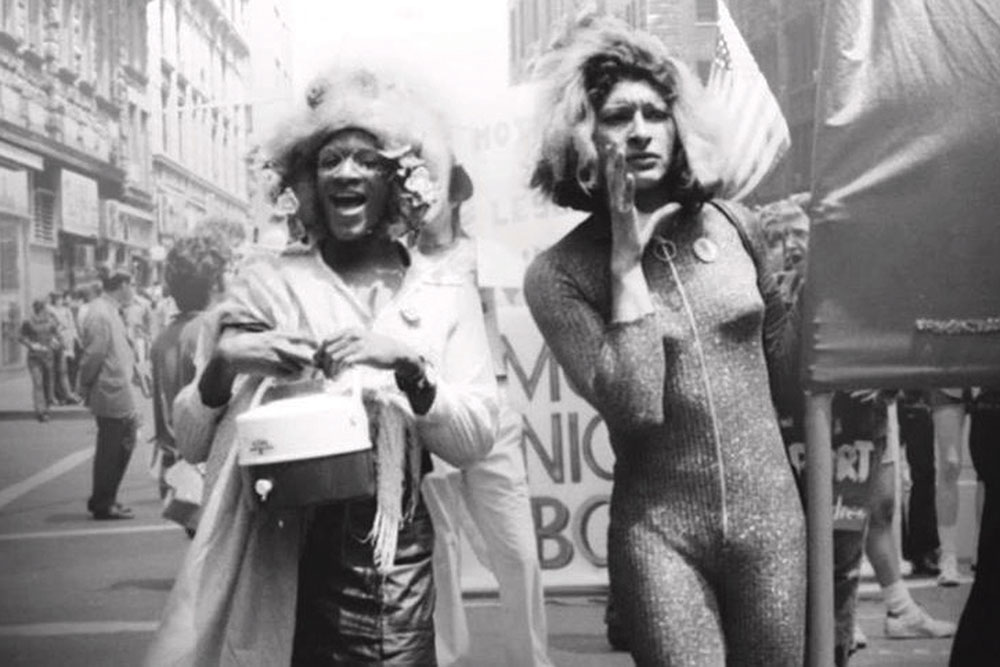
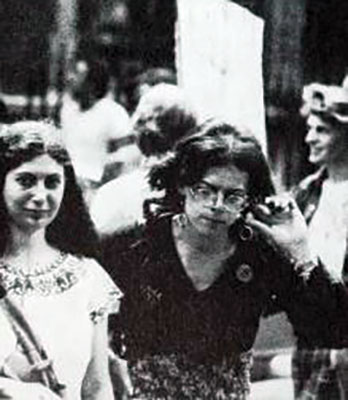
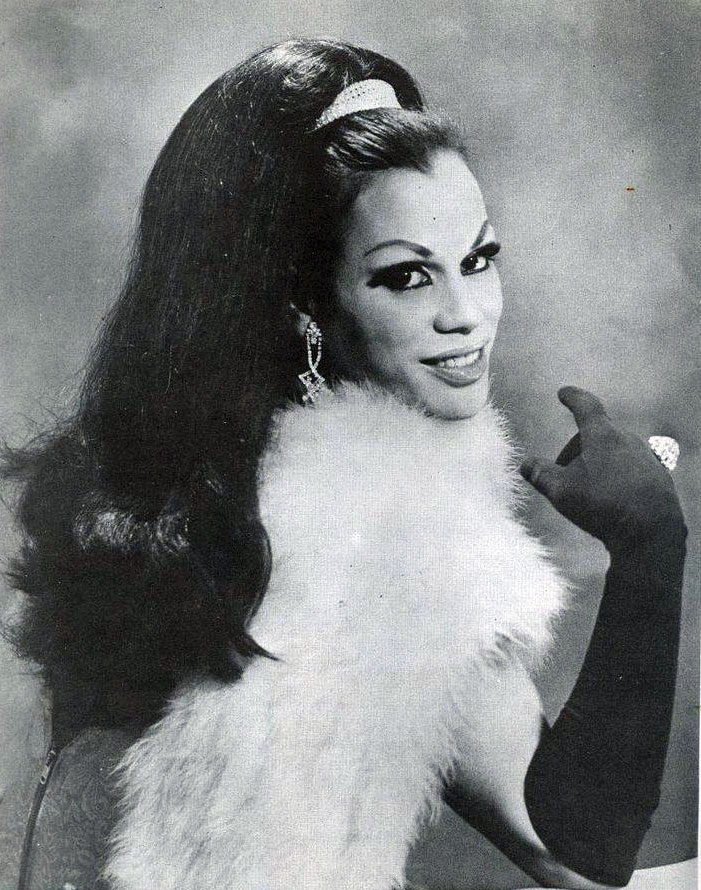

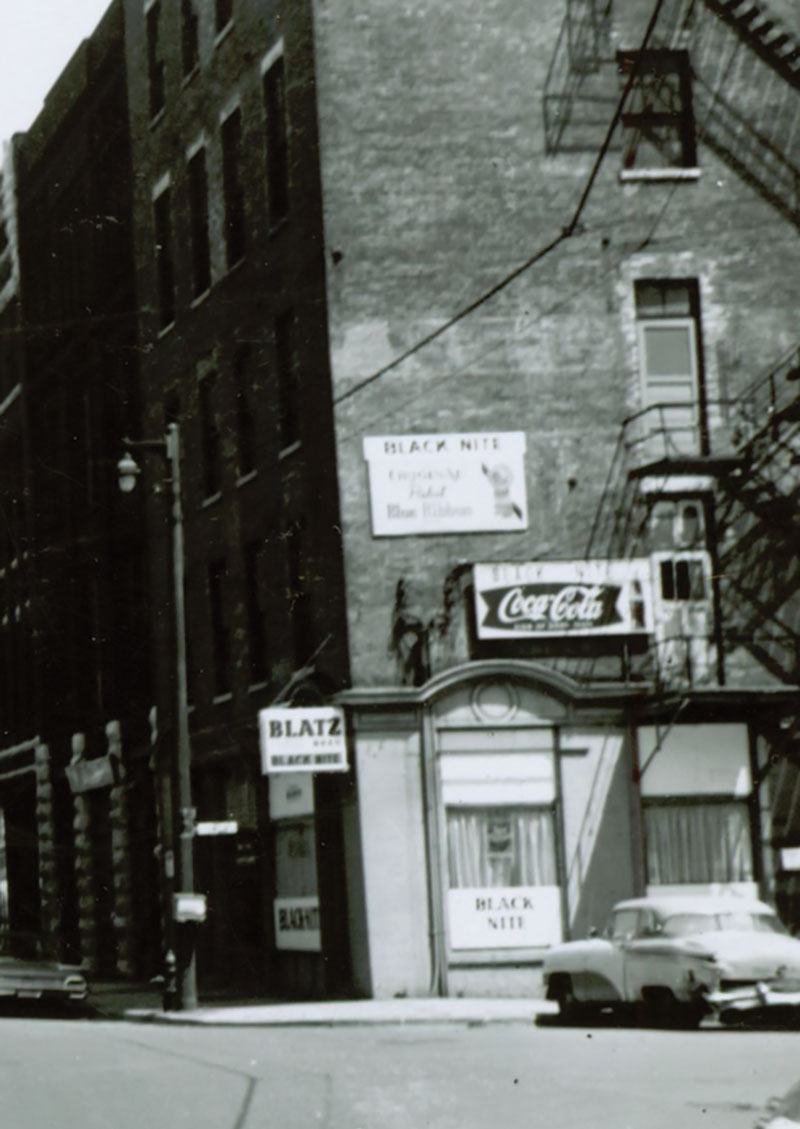






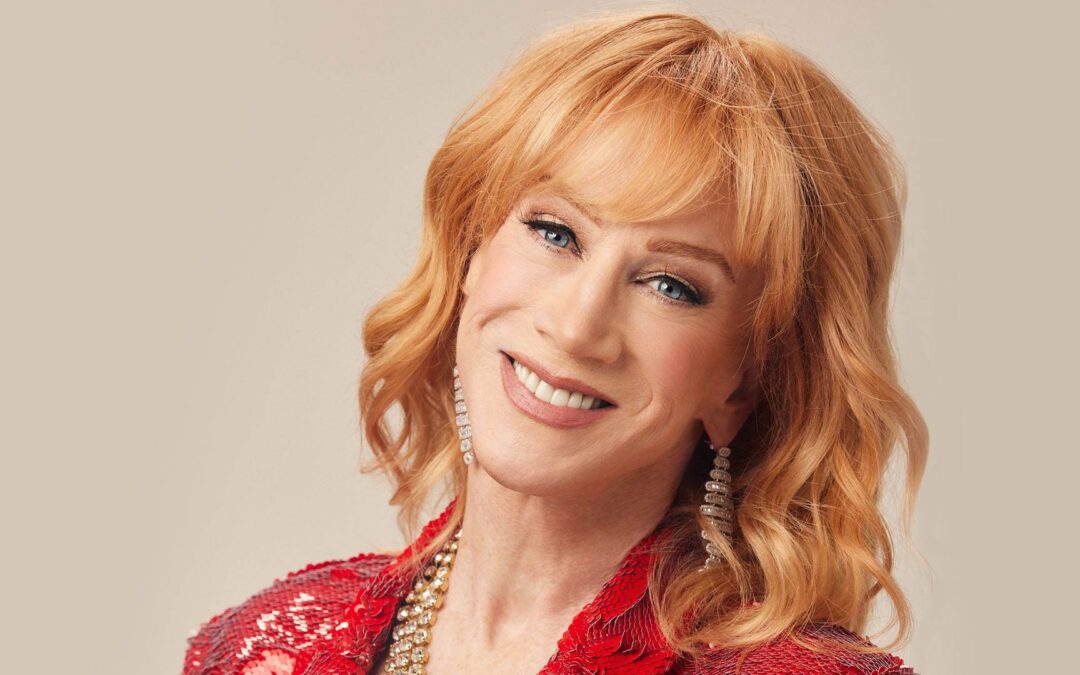
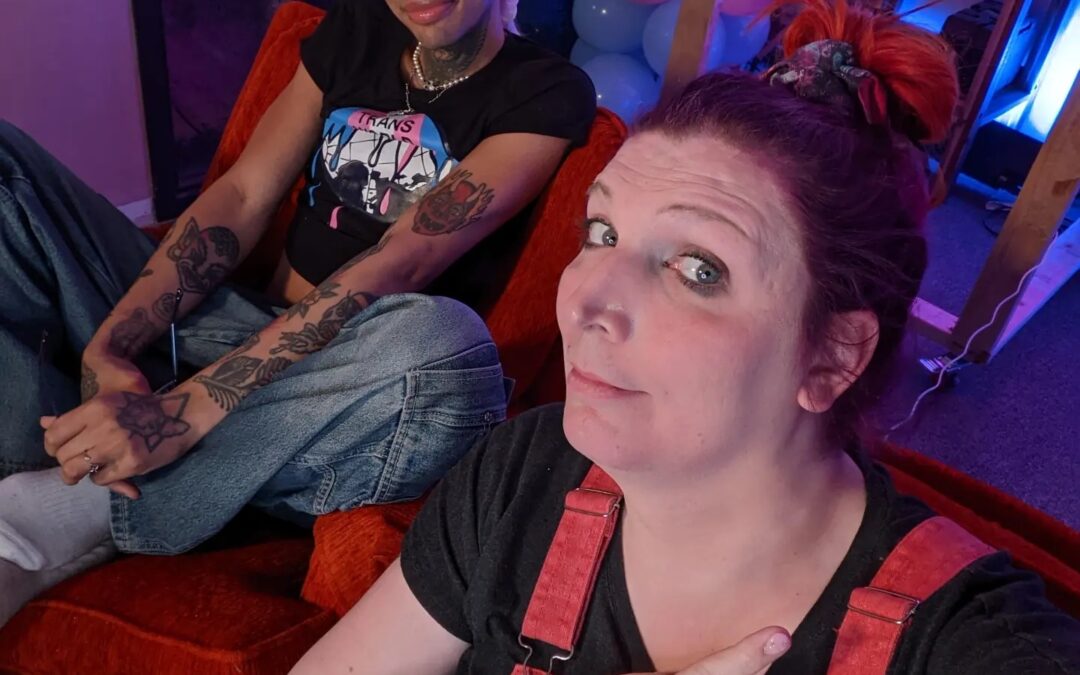
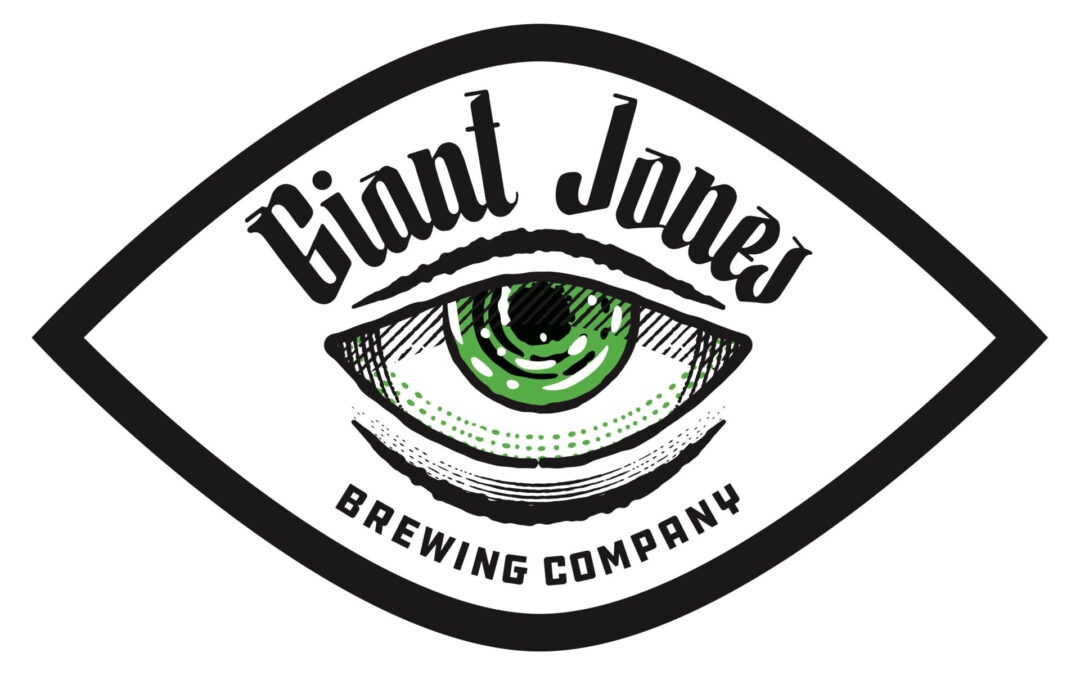

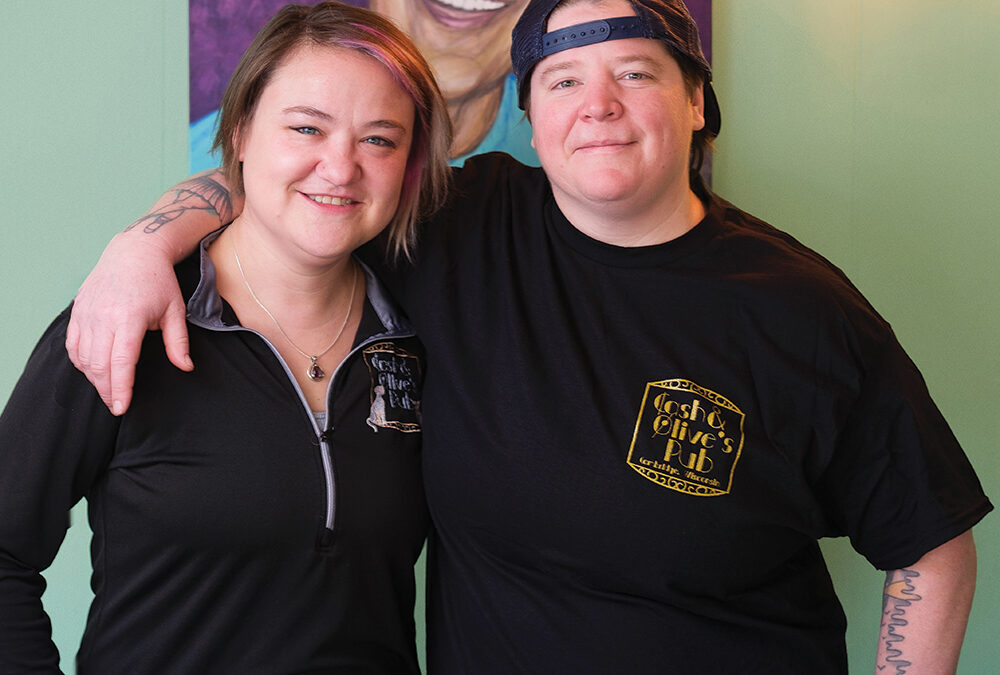
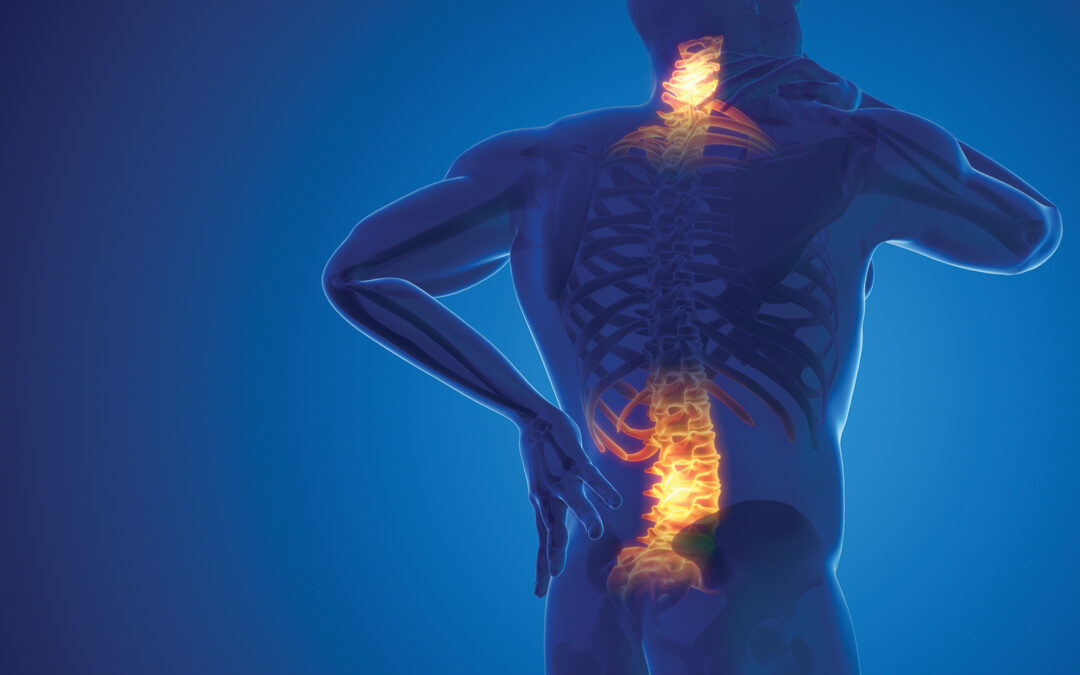
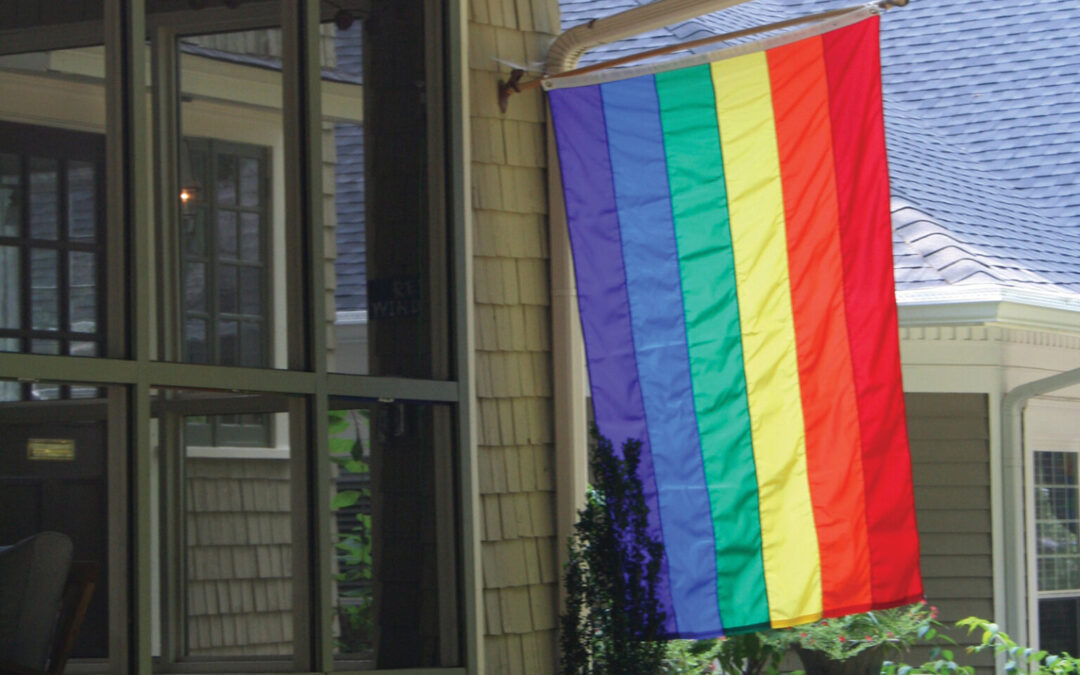
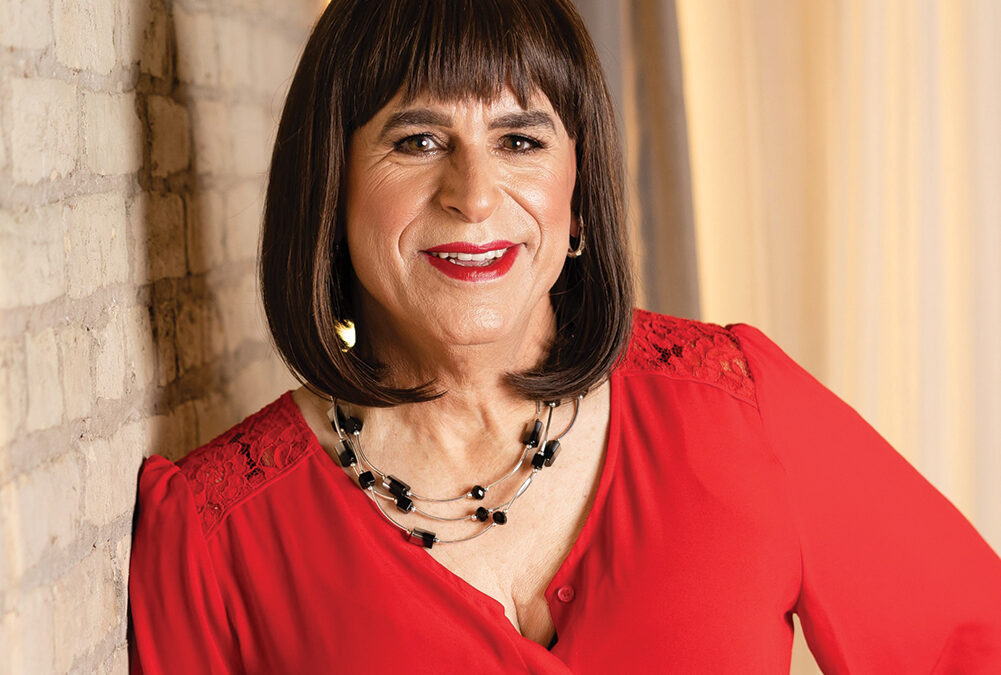
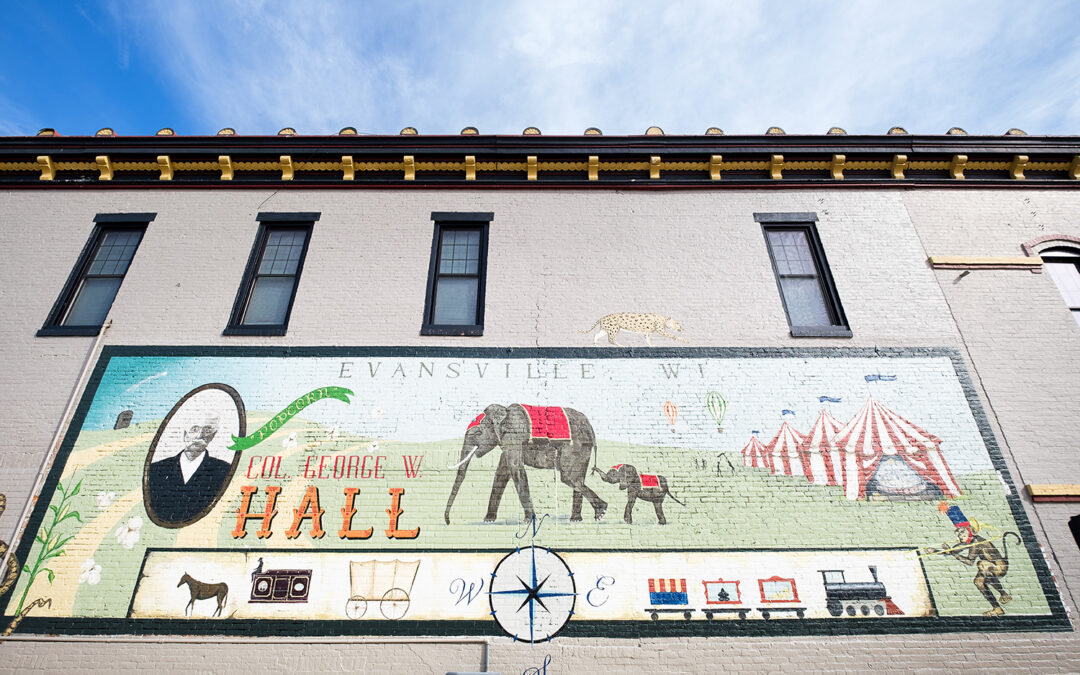
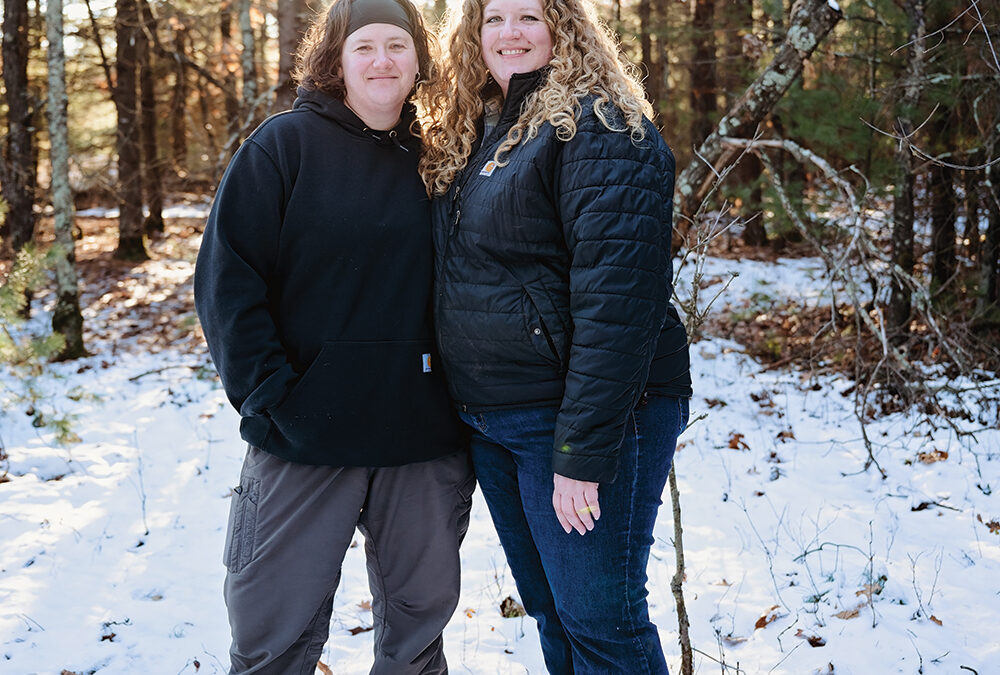




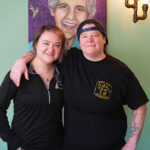



0 Comments